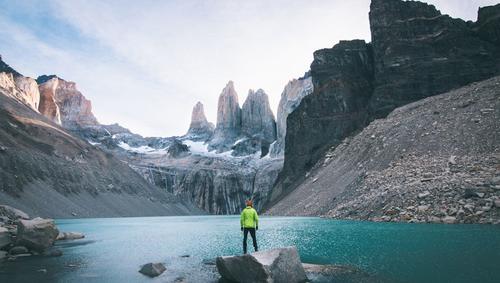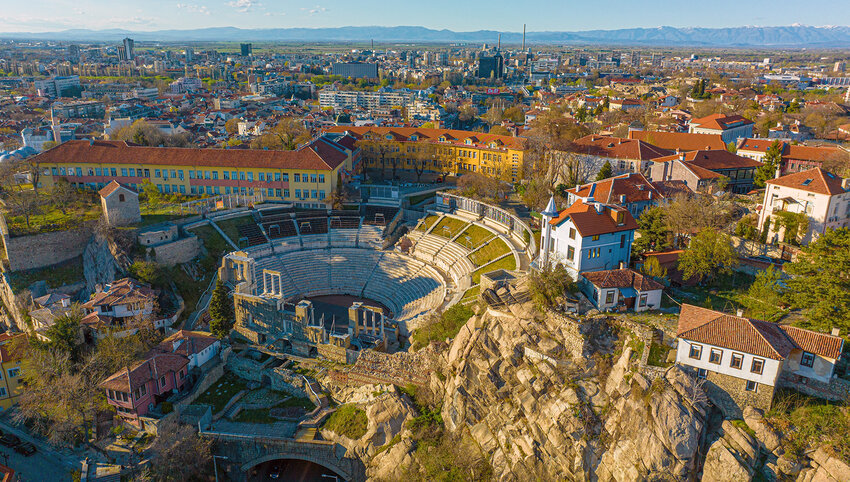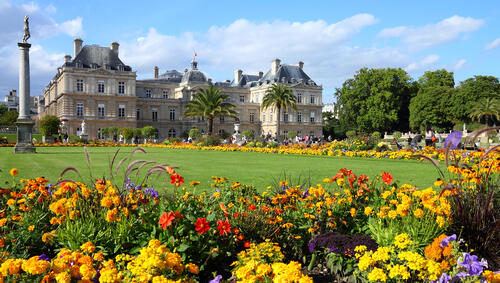Situated a good distance below the equator stretches a mountainous, breathtaking, yet demanding territory. With tough terrain, harsh elements, and plenty of beauty and mystique, Patagonia remains at the top of most adventure trekkers' bucket lists. From jagged snow-capped peaks to lakeside meadows dotted with wildflowers, this diverse landscape is a feast for the eyes. We're exploring the dramatic region of Patagonia and all the insider tips you need to know to explore like a pro.
Geography and Topography

Wild and mountainous terrain dominates much of Patagonia, a sparsely-populated region covering the vast southern tip of South America. Straddling parts of Argentina and Chile, Patagonia comprises multiple biological habitat zones. On the Argentine side are seemingly endless arid steppes, grasslands and deserts. Chilean Patagonia, on the other side of the divide, has been shaped by still-active glacial fjords and contains delicate and unbroken tracts of temperate rainforest in addition to its craggy summits.
In Argentina, the country’s famous RN-40 highway winds through valleys beneath the spires and pinnacles of Mount Fitz Roy and along Perito Moreno Glacier in Los Glaciares National Park. Another prime Patagonian outdoor destination is Chile's Torres del Paine National Park, where an arduous hike to the base of Paine Towers — the park’s namesake formations — reveals three rock spires rising vertically more than 3,000 feet above an impossibly deep-blue, glacier fed lake.
When to Visit
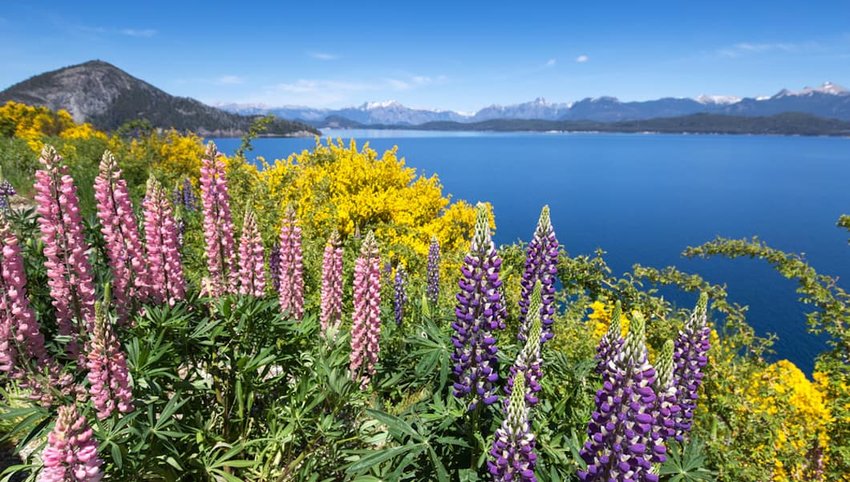
Few lodgings in the region remain open year-round, so your best bet is to travel from spring through fall (mid-September to early May). Spring offers less crowds and the chance to see stunning flowers blooming through the melting winter snow. Fall, on the other hand features landscapes flecked autumn colors. Keep in mind that, even in the summer, temperatures rarely rise above 70 degrees Fahrenheit, and strong winds necessitate a heavy jacket no matter when you go.
Where to Explore
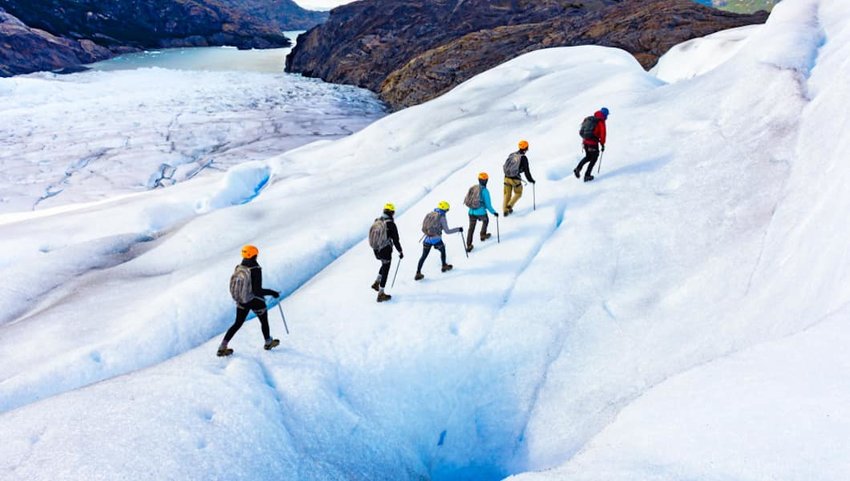
Absolute, exhilarating isolation is a guarantee on a Patagonian wilderness trek. Reaching up from the flat Patagonian steppes, the breathtaking, chiseled peaks of Torres del Paine National Park stand out as the crown jewels of Chile's park system. The desolate grandeur of dramatic, spire-capped granite mountain ranges, grinding glaciers, and windswept steppes have long been a draw for global adventure seekers. If that’s why you’re headed here, the possibilities of this playground are limited only by your abilities.
Within Torres del Paine, environments for exploration include dense emerald forests, hidden waterfalls, shimmering high-altitude lakes and awe-inspiring views of the Southern Ice Fields near the southern tip of the continent. Hiking glaciers, spotting pumas and condors, and discovering turquoise lakes are all on the agenda.
Hop over to Los Glaciares National Park in Argentina to scout out the legendary Perito Moreno glacier. Make a pitstop at the town of El Chaltén and enjoy stunningly dramatic views of the jagged peak of Mount Fitz Roy.
Further south, walk among waddling penguins at Seno Otway or Magdalena Island. Then take to the water and kayak the Strait of Magellan.
Culture and Customs
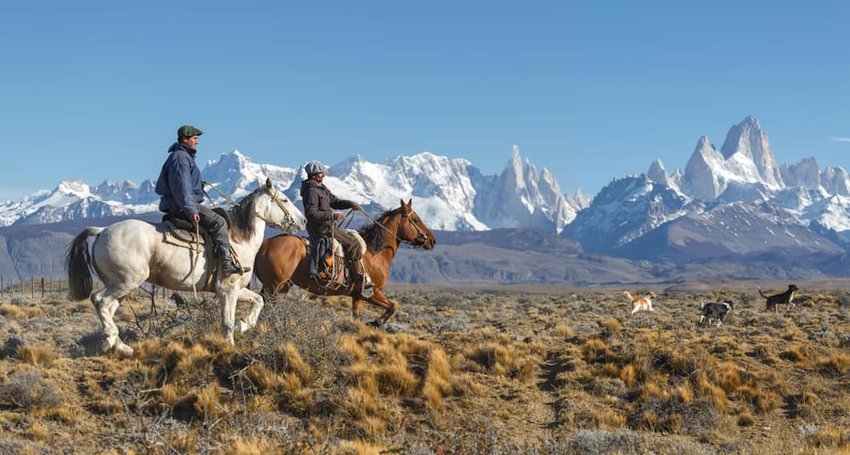
With such breathtaking landscapes and natural marvels, it’s easy to overlook Patagonia’s rich cultural history. Original inhabitants here were nomadic tribes such as the Kaweskars and Yaghans, who followed the seasons. Eventually, agriculture and farming settlements arose. Surviving early sheep and cattle ranches of the Argentinian gaucho and Chilean baqueano cowboy cultures today operate as guest estancias.
Visitors can explore these cultural communities in a number of ways. At EcoCamp guests are educated with trips to early sites used by nomadic tribes and stay in domed tents based on ancient designs. Cuisine at EcoCamp is a blend of Chilean, Altiplanic, and Patagonian traditional fare. For example, staples such as purple potatoes, quinoa and patasca combine for Altiplano, a tripe stew that also includes corn and peppers.
EcoCamp also partners with modern local cowboys to provide immersion experiences, allowing visitors to live the gaucho lifestyle in frontier towns on working ranches. Founded in 1902 by an Anglican missionary, Estancia Viamonte remains in his ancestors' hands, and they have created an experience that takes advantage of the property’s dramatic setting on a cliff looking out over the Atlantic Ocean.
What to Eat
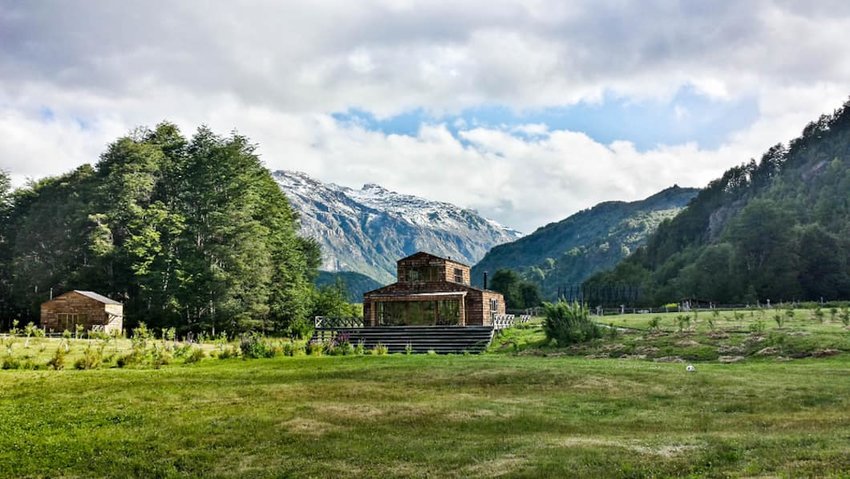
If tripe stew is too rustic for your liking, there is plenty of other classic Patagonian cuisine to try. Asado is at the top of the list. This dining experience will mean even more if you have visited the remote towns on the edge of the pampas, where their style of seasoning fresh beef and cooking it over open fire pits of perfectly tended coals results in unctuous, smokey seared taste is like that of no other steak.
Combined with this cooking method, the true key to asado is the seasonings in its signature sauce, chimichurri. A bright, flavorful blend of garlic, parsley, onion, oregano, olive oil and dried chillies, the thick condiment is somewhere between a sauce and a paste, making it a natural as both a marinade and a topping for grilled meats.
Places to try a rustically prepared cut of cow in a refined atmosphere include Don Julio, a premier Buenos Aires steakhouse. Also look for menus that feature roast Patagonian lamb, slow cooked until tender enough to slide off the bone.
Due to elevation, Patagonia vineyards allow for long, slow ripening of the fruit, which results in sharp, defined wines with minerality and perfect acidity. Such traits result in intense aromatics and depth of flavor, and part of the credit must go to the growers, who manage in the southernmost wine region in the world. For an in-depth dive into regional wine, book the Luxury Patagonia & Wineries tour from Southern Explorations outfitters.
The Best Patagonia Treks
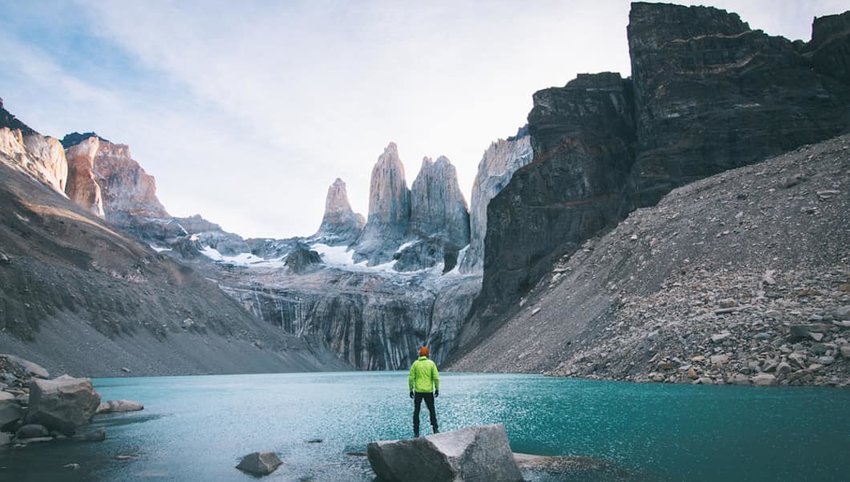
Because of its rugged adventure opportunities and volatile weather, joining a wilderness trek can be one of the best ways to experience this region.
For example, the itinerary for outfitter Southern Explorations’ Patagonia Highlights excursion includes the region’s iconic penguins. In fact you can walk among the waddling characters and spy the Perito Moreno glacier without a steep mountain ascent or roughing it in a tent. Instead, enjoy moderate hiking and paddling adventures with a historic lodge bed awaiting at the end of a long day.
For daytime adventure with a hotel bed at night, Backroads.com offers an Argentina Adventure package that fits the bill. Walking and hiking tours get the less adventurous out and actively seeking scenery, while multi-sport adventures provide more pulse pounding fun with epic backdrops.
How to Get There and Get Acclimated
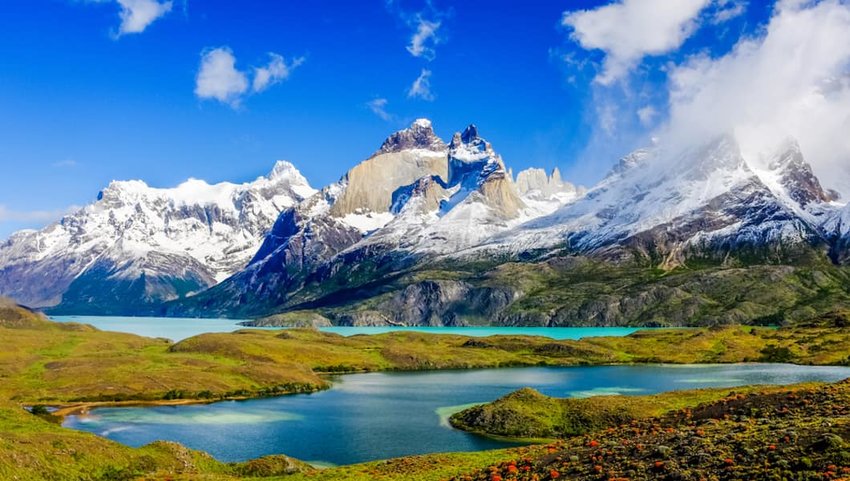
Flying into the Patagonia region, international travelers will initially arrive at Comodoro Arturo Merino Benítez International Airport in Santiago, Chile; or at Ezeiza International Airport in Buenos Aires, Argentina. Domestic flights from these hubs can be taken to the south, although travelers landing in Buenos Aires may need to link to Aeroparque Jorge Newbery, since the majority of regional flights depart from there.
Unless you’re summiting an extreme peak, altitude sickness shouldn’t be an issue for most travelers. Landing in Santiago, for example, the elevation is 1,870 feet above sea level, while Buenos Aires sits at just 82 feet. Leaving the cities and heading into the mountains, the elevation is reasonable on most treks and popular hikes. Know your limits, however; if you are climbing higher than 10,000 feet, take precautions. Take time to acclimate, ascend slowly and have medication in case. If you have respiratory problems, existing health concerns or have had past problems with altitude sickness, contact your primary care physician for recommendations.
Accommodations

Once you’re trekking, you will stay mostly in tents. But there are a few luxury options within the region you'll want to check out. Explora is one of the best, as its the only 5-star hotel within Torres del Paine. Also worth checking out are the luxurious private villas at Awasi. Finally, glampers will love EcoCamp, a dome-shaped hotel with multiple accommodation options.
If you want to check out Buenos Aires or Santiago on the way in or out, there are even more lodging options. Budget travelers may find refuge at Reina Madre Hostel in Buenos Aires, where basic dorms and private rooms share a relaxed vibe with a communal kitchen and rooftop deck. Classy hotels here include name brands such as Four Seasons, Hyatt and Hilton, but for local flair check into the ritzy Alvear Palace Hotel, a restored palatial building with regal suites, French cuisine and a spa.
Similarly, in Santiago accommodations range from Ritz Carlton and Marriott to Holiday Inn Express, but situated just outside of Santiago at the Santa Rita vineyard, one of the oldest wine cellars of Chile, a historic neoclassical estate has been refurbished into Hotel Casa Real. The 16 rooms have calming views of lush green gardens and the turquoise swimming pool. Guests enjoy dining at two restaurants, with indoor seating at Casa Real, or al fresco at Doña Paula Restaurant in the gardens -- both with extensive wines lists of local vintages.

